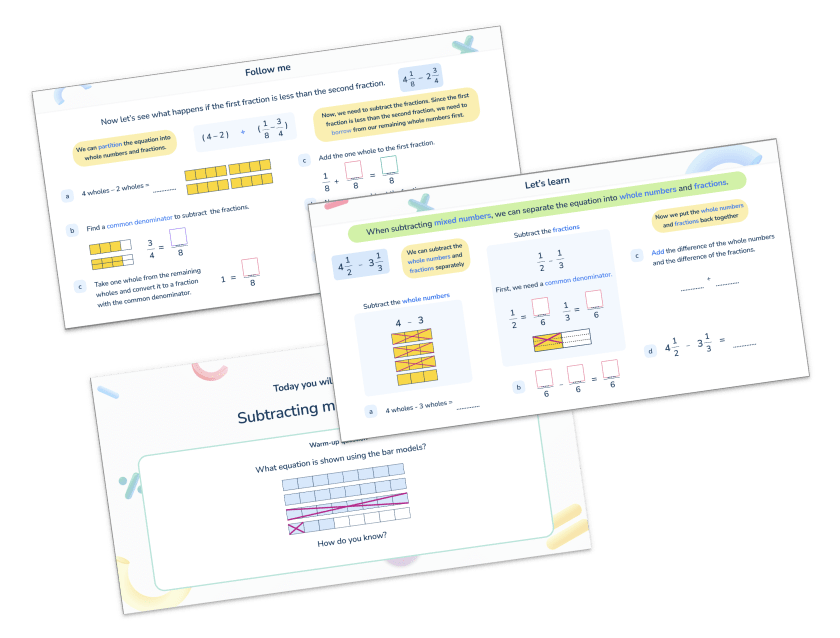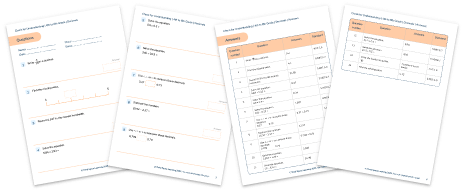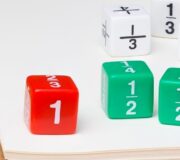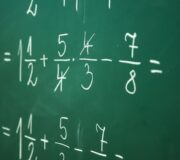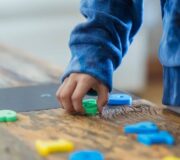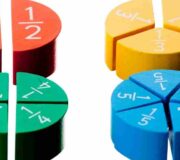Teaching Decimals In Elementary School: A Guide For Upper Elementary School Teachers Grades 4-6
Decimals are a new topic to most elementary school students. While they will have encountered some related topics like fractions, decimals themselves are a different way of looking at numbers than they are used to.
This blog will provide tips and tricks for helping your students approach decimals with confidence. Decimals can be taught at different grade levels depending on the standards that your district or school follows.
This blog follows the Common Core State Standards (CCSS), but will note when the grade level is different for other standards, like the Texas Essential Knowledge & Skills (TEKS) for example.
What are decimals?
Decimal numbers (as opposed to decimal points) are one way of expressing non-whole numbers. They are sometimes explained as being ‘the numbers between numbers’ – for example 6.5 is halfway between 6 and 7.
In elementary math decimals fall into the same broad category as fractions and percentages – methods we can use to describe mixed numbers or non-whole numbers.
Decimals Check for Understanding Quiz
Use this quiz to check your grade 4 to 6 students’ understanding of decimals.
Download Free Now!Teaching decimals in upper elementary
Decimals are first introduced into the standards in 4th grade. However, it is not always straightforward to know when and how to teach decimals, due to some contradictions within the standards.
For example, in 2nd grade students are introduced to measurement and are required to solve money problems involving dollars and cents ($ and ¢). Of course, to do this successfully, the students need to be aware of not only tenths but hundredths, which is not a requirement in the standards until 4th grade.
In 3rd grade, students may be informally introduced to the term ‘tenths’ when discussing fractions. However, like before, the word ‘tenths’ is not explicitly taught until students reach the 4th grade.
It is worth the teachers in lower grades to bring this to the attention of the math lead in their school to highlight the discrepancies and come up with a plan that suits their school. We don’t want to create any misconceptions for our students going into this topic.
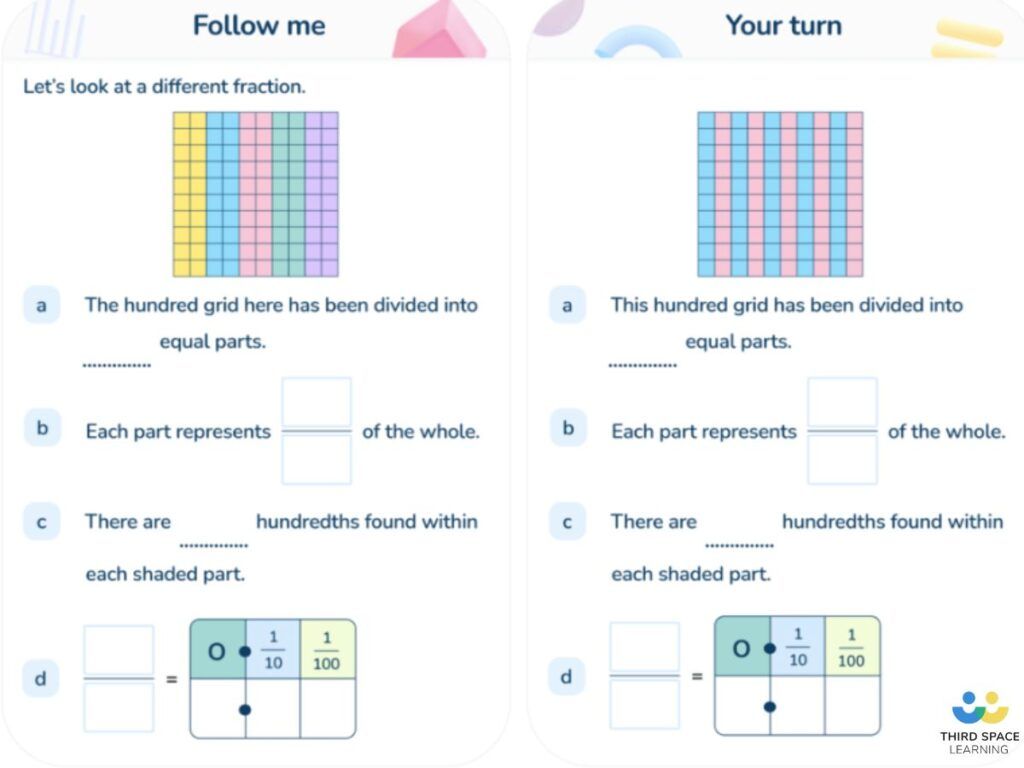
The theory
Note: As there is such an overlap between decimals, place value and fractions, it is suggested that you look at those blogs to get a strong sense of the development of teaching decimals.
It should be clear from the beginning, that the principles behind the teaching of fractions and place value are the same as those for the teaching of decimals.
The role of the teacher is to make the connection between these two areas explicit for students so that they can see that decimals are merely a continuation of these ideas and not something completely new.
It is by drawing the attention of students to these connections that we can drastically reduce the teaching time required to teach math concepts, and increase the chances of students achieving mastery of math concepts.
Decimals: Reasoning and Problem Solving 4th Grade
A typical reasoning/ problem solving activity may look like the following:
0.1, 0.2, 0.3, 0.4, 0.5, 0.6, 0.7, 0.8, 0.9, 0.10
Can you find the mistake?
A common error for students to make is that after 0.9 they say ‘zero point ten’ as they forget about the rules of place value. As we can see from the above, that mistake has been made. Students should be able to identify this error and explain, using their knowledge of place value, why this is incorrect.

Meet Skye, the voice-based AI tutor making math success possible for every student.
Built by teachers and math experts, Skye uses the same pedagogy, curriculum and lesson structure as our traditional tutoring.
But, with more flexibility and a low cost, schools can scale online math tutoring to support every student who needs it.
Find out more
Decimals 4th Grade
According to Common Core State Standards, by the end of 4th grade students are generally expected to:
- Use decimal notation for fractions with denominators 10 or 100. For example, rewrite 0.62 as 62/100; describe a length as 0.62 meters; locate 0.62 on a number line diagram.
- Relate decimals to a fraction;
- Compare two decimals to hundredths by reasoning about their size. Recognize that comparisons are valid only when the two decimals refer to the same whole.
- Use the four operations to solve word problems involving distances, intervals of time, liquid volumes, masses of objects, and money, including problems involving simple fractions or decimals;
For schools and districts that follow standards, other than CCSS, students are generally expected to:
- Relate decimals to a fraction;
- Represent decimals, to the hundredths place, using concrete and visual models, including money
- Represent decimals and fractions on a number line
- Adding and subtracting decimals to the hundredths place, using the standard algorithm
- Compare and order decimals to the hundredths place
Decimals Activities 4th Grade
For this lesson I will focus on the objective ‘relating decimals to fractions.’
Students should be familiar with these fractions from work from prior grades. As mentioned in the ‘theory of teaching decimals’ section, our job is to make links between content explicit and to ensure that students attend to these links.
Many students across the country when learning fractions will have used a fraction wall like the one below.

These are useful to demonstrate the fractional equivalence between different fractions as well as for supporting basic arithmetic with the use of fractions, particularly when the denominators are the same.
If students are fluent with this resource, then a simple tweak allows the teacher to bring the relationship between decimals and fractions to life.
By replacing the fractions with decimals on the same resource, students will be able to apply what they know already about the resource into the new context. Personally, I feel giving students access to both side-by-side brings the most benefits to students thinking about the mathematical content.
Asking students ‘What is the same? What is different?’ is a powerful question. This is far from ‘discovery learning.’ Careful consideration has gone into the resource and there are plenty of pre-planned questions with small activities to ensure that the relationship becomes clear.
Questions that can bring about mathematical thinking could include:
- What happens if you swap a ½ for a 0.5?
- How many 0.5 strips are equivalent to ¼?
- What do you notice if you place all the 0.25 strips under the ¼ strips?
- What do you get if you take one of those 0.25 strips and ¼ strips away?
- Is there a ½ strip that is equal to three 0.25 strips?
- What happens if I place a 0.5 strip after both ½ strips?
Clearly these questions are not the only questions that one could ask, but they demonstrate the importance of planning such questions and activities in advance to ensure that our students are thinking deeply about elementary mathematics.
Decimals Word Problems 4th Grade
A typical word problem in 4th grade involving decimals would be something like the following:
Jenny read 410 of her summer reading book. Write a decimal that represents the part of the book Jenny has read.
This question aims to give students a context for the learning of decimals and the fraction they relate to. Students will have to use their new knowledge to know that 410 is the same as 0.4.
Decimals: Reasoning and Problem Solving 5th Grade
Mohammed is thinking of a number. When rounded to the nearest whole, the answer is 6. When rounded to the nearest tenth the answer is 5.9. What could Mohammed’s number be?
Here students need to consider the differences between rounding between two different values and how this affects possible answers.
They may deduce that the whole in the number will be 5 as this, followed by a tenth value above 5 would round to 6 and fulfill the requirement when rounding to the nearest tenth where the whole must remain a 5.
Secondly, in regards to the decimals, students need to know the greatest and least number where one could round up or down from to still get 5.9.
Answers: Any numbers between 5.85 and 5.94.
Decimals 5th Grade
By the end of 5th grade, students should be able to:
- Explain patterns in the number of zeros of the product when multiplying a number by powers of 10, and explain patterns in the placement of the decimal point when a decimal is multiplied or divided by a power of 10.
- Read, write, and compare decimals to the thousandths place (3 decimal places)
- Use place value understanding to round decimals to any place
- Add, subtract, multiply, and divide decimals to the hundredths place
- Read, write, order and compare numbers with up to three decimal places
- Solve problems involving number up to three decimal places
For schools and districts that follow standards, other than CCSS, students are generally expected to:
- Represent the value of decimals, through the thousandths place;
- Compare and order decimal to the thousandths place;
- Multiply and divide decimals to the hundredths place;
- Round decimals to the hundredths place;
Students can explore and make conjectures about converting a simple fraction to a decimal fraction (for example, 3 ÷ 8 = 0.375). For simple fractions with recurring decimal equivalents, students learn about rounding the decimal to three decimal places, or other appropriate approximations depending on the context.
Students multiply and divide numbers with up to two decimal places by one-digit and two-digit whole numbers. Students multiply decimals by whole numbers, starting with the simplest cases, such as 0.4 × 2 = 0.8, and in practical contexts, such as measures and money.
Students are introduced to the division of decimal numbers by one-digit whole number, initially, in practical contexts involving measures and money. They recognize division calculations as the inverse of multiplication.
Students also develop their skills of rounding and estimating as a means of predicting and checking the order of magnitude of their answers to decimal calculations. This includes rounding answers to a specified degree of accuracy and checking the reasonableness of their answers.
Decimals Activities 5th Grade
For this lesson I will focus on the objective ‘use place value understanding to round decimals to any place.’
This objective looks at many mathematical ideas and where appropriate, such objectives should be broken down into smaller manageable ones. For the remaining part of this section, it will focus on rounding decimals with two decimal places to one decimal place.
Note that this objective builds on from the 4th grade objective ‘use place value understanding to round multi-digit whole numbers to any place.’ Therefore, before teaching this new content, it would be sensible to check for the prerequisites and see if students are able to do it.
If they cannot, then plowing ahead with the objective from the 5th grade sections will be pointless. For the sake of this blog, assume that students do have this prerequisite knowledge.
Place value counters and empty number lines are useful resources to teach this concept.
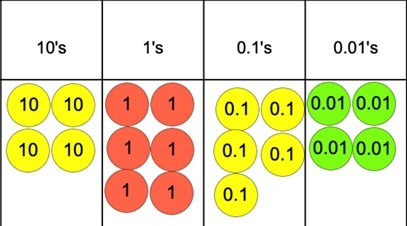
Students should be able to look at a place value chart like the one above and identify what the number being shown is. In this case 46.54.
Before we start with rounding to the nearest tenth, a discussion needs to take place between what the possible numbers may be. Language is important here. Quite often, when the term ‘round down’ is used students take this to mean that the place value that we seek to round moves decreases.
This is due to the connotation of the word ‘down’ and its link to something getting smaller and when we round up, there is a change in the digit within the place value. It is crucial that students understand that the process of ‘rounding down’ means that the place value that we wish to round to remains the same.
The place value chart helps here, as students will know that when we round to the ‘nearest’ then the digits of all numbers to the right of what we are rounding to will be zero. The digits to the left of the place value we are rounding will remain the same and this can be identified using the place value chart and counters.
We can see that the 10s and 1s will remain the same and the 0.01s will become zero (in the case of decimals, the zero does not need to be written as it is implied). It can be drawn out the possible numbers that 46.54 could be rounded to would either be 46.5 or 46.6.
Writing these either side of an empty number line is useful for the development of students’ conceptual understanding. It should be noted that this is one place where students can come undone when rounding and so giving students plenty of practice in identifying the potential rounded numbers either of the original number is often required.
The next step would be for students to place the original number onto the empty number line.
Here students can then use both visual representations, along with their knowledge of rounding rules to deduce that the answer must be 46.5 as 46.54 is closer to it. This can be seen from the place value chart, as there are four 0.01s this number is then rounded down.
Decimals Word Problems 5th Grade
A suitable word problem would be like the following:
Chris is measuring the length of a wall. He rounds his answer to 4 feet. What is the smallest length that the will could be?
This question checks students’ understanding of the limits in which something can be either rounded up or down. Here they need to determine that the shortest length the wall could be would be 3.5 feet long as anything smaller than this would be rounded down to 3 feet.
Decimals 6th Grade
By the end of 6th grade and before children transition into middle school, students should be able to:
- Fluently add, subtract, multiply, and divide multi-digit decimals using the standard algorithm for each operation.
For schools and districts that follow standards, other than CCSS, students are generally expected to:
- Generate equivalent forms of fractions, decimals, and percents using real-world problems, including problem that involve money
- Represent ratios and percents with concrete models, fractions, and decimals
- Use equivalent fractions, decimals, and percents, to show equal parts of the same whole
Decimals Lesson Ideas 6th Grade
For this lesson I will focus on the objective ‘fluently add, subtract, multiply, and divide multi-digit decimals using the standard algorithm for each operation.’
By the time students get to 6th grade, they should be comfortable using all 4 operations when it comes to multi-digit decimals. To allow some practice with more than just one operation, I always like to use my “Classroom Restaurant” lesson for review.
It will take a little prep work up front, but once you complete it once, you can use it over and over again for years to come. You can also have students help you create it the first time, and take that extra work off you.
To start, you will need a restaurant concept, think Italian or American, and create a full menu of all the items you would find in your favorite restaurant in town. We all know that menu items come with prices included…and I bet you see where I’m going from there.
Alongside the menu, you will need a list of possible scenarios and a list of “oops” cards. These two cards will put students in the waiter/waitress’ shoes and have them interact with the menu and the prices in many different ways, which means no two times that students play will be the same.
The scenario cards range from “create a ticket for a couple of two and calculate the total”, to “a family of 5, a mom and 4 children, sit at your table and order 7 items total, find their total bill”.
These scenario cards are almost always going to be related to addition in some way. But, where the other operations come in is with the “oops” cards.
These cards could include “the kitchen dropped your appetizer, refund the family for this item”, or “split the bill to where each family member receives an equal share of the check”.
These “opps” cards will allow you to check to see that your students are fluent in multiple operations when dealing with decimals.
Decimals Word Problems 6th Grade
A typical 6th grade word problem would be like the following:
The population of London is 8.961 million. The population of England is nearly 6 times as much. What is the population of England to the hundredth place?
This is a two-step problem that requires students to multiply 8.961 million by 6. Here students should use a formal written method to support their thinking. The answer would be 53.76 million.
The next step would be to round this answer to the nearest decimal place which would give 53.77 million or 53,770,000.
Decimals: Reasoning and Problem Solving 6th Grade
A possible reasoning and problem-solving activity that students could do in pairs would be to find a way to get from a given number to another number using the place value chart in as few moves as possible.
For example, students may need to go from 5.532 and get to 9.909. To increase the difficulty, you could put in rules such as all 4 operations must be used at least once. Or only 2 counters can be moved at any one time. There are many options available to increase the difficulty of this task.
This type of activity is ideal for assessment for learning as it makes you see just how good a student’s grasp of the number system and laws of arithmetic really are.
Decimals can be a difficult topic for students to get their heads around. Hopefully this post has given you some good ideas to help your students approach it with confidence, no matter which grade they are in!
Do you have students who need extra support in math?
Skye—our AI math tutor built by experienced teachers—provides students with personalized one-on-one, spoken instruction that helps them master concepts, close skill gaps, and gain confidence.
Since 2013, we’ve delivered over 2 million hours of math lessons to more than 170,000 students, guiding them toward higher math achievement.
Discover how our AI math tutoring can boost student success, or see how our math programs can support your school’s goals:
– 3rd grade tutoring
– 4th grade tutoring
– 5th grade tutoring
– 6th grade tutoring
– 7th grade tutoring
– 8th grade tutoring
The content in this article was originally written by primary school lead teacher Neil Almond and has since been revised and adapted for US schools by elementary math teacher Christi Kulesza.
